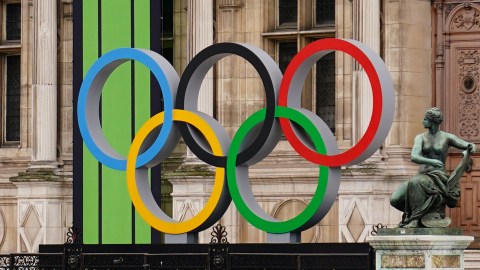There’s no truth to the rumor that NBC now refers to “Nothing But Curling,” the network’s apparent programming plan during the opening days of the Winter Olympics. Still, there’s no denying that the sport has dominated the early television coverage of the Vancouver Games.
And why not? It may be upsetting local puckheads like NESN.com’s James Murphy, but curling does make for awfully compelling television. Whether it’s the crazy Canadian fans rooting on their curling idols, the John Daly-designed pants of Team Norway or the agonizing losses suffered to this point by the U.S. men’s and women’s teams, there’s been drama aplenty.
But bring up the sport here in the U.S., and most people either scoff or tilt their head in a befuddled fashion (the way my dog does when I start talking to him). “Huh? Curling? Really? (Does this mean I’m getting a treat?)” Not surprisingly, “curling rules of play” were among Google’s most searched-for terms on Wednesday.
In short, the sport — which dates back to Scotland in the mid-1500s — is basically shuffleboard on ice. Each match is made up of 10 rounds or “ends,” which are basically like innings in a baseball game. In each end, each team gets eight stones (the name for the polished, approximately 40-pound, teapot-shaped piece of granite), which they alternate hurling strategically at a bull’s-eye-shaped target (called the house) at the other end of the narrow sheet of ice. After all 16 stones have been tossed, the team with the stone closest to the bull’s-eye gets one point, plus an additional point for any other stones they’ve thrown which are also closer to the bull’s-eye than any of the opponent’s stones.
Confused? Take a number.
And believe me, curling’s tactics are far more complex than you’d think. But that’s not what makes the sport so appealing.
“There’s a lot of strategy and science,” says Phyllis Ely of the Rochester (N.Y.) Curling Club. “But it’s a place where you stand back and applaud a great shot even when it knocked you out of the game. It’s a little spot in the world where people are good to each other. It’s great for kids.”
“And,” she adds, “your beer never gets warm.”
Bonus.
Yes, drinking while curling is apparently a routine part of the exercise — a point that suggests the sport doesn’t offer its competitors much exercise at all. Guilty as charged. But then again, neither does darts or bocce, two games that are very popular with the beverage-consuming populace.
Not only is curling big with those leisure-seekers expecting to knock a few back while they compete, but it’s equally big with those who are simply … ahem … expecting. Canadian alternate Kristie Moore could become the first pregnant woman in 90 years to win an Olympic medal. I don’t know which is more shocking: that a woman can compete on a world-class level while she’s pregnant or that there was already an expecting mother who won an Olympic medal.
The point to be taken from all this is that while curling is not the most athletic sport in terms of physical endurance, stamina or strength, it is a fun, interesting parlor game at its very best. There’s plenty of skill, like that required to curl the stones around those of your opponents (that, experts say, is where the sport’s name comes from) to land in the house. There’s plenty of hand-eye coordination as well, like that required to vigorously sweep the ice with a broom to either make the stone fly farther or to get it to curl to the left or right.
And there’s plenty of excitement, like in the U.S. men’s match Wednesday against Switzerland. The Swiss tied it up on a measurement on the final stone of the 10th end. Then, tied 6-6 and heading to an 11th end, skip John Shuster had a chance to win it for the Americans with the final stone (known as the hammer), but his attempt at a take-out shot went awry, giving the Swiss a 7-6 extra-end win. The U.S. teams are a combined 0-5 through two days of competition.
But things are going differently for the top-ranked Canadian sides, who are a combined 4-0 on their home ice. Not surprisingly, the local fans have been particularly rowdy in support of their red-and-white-clad countrymen and women. But even the Canadian team members are shocked by the volume at the Olympic facility.
“It’s so loud you can feel it inside your body,” Cheryl Bernard, skip of the Canadian squad told the Toronto Sun. “I’m having trouble telling my two sweepers what kind of weight I’m going to throw. They can’t hear me. And they’re standing two feet away from me!
“But, wow, this is an incredible atmosphere. I can’t believe this environment. It’s amazing.”
Despite the expected enthusiasm of their home crowd, it’s still a bit overwhelming for the Canadian women.
“Usually for the morning draw, there aren’t many people there,” said Canadian third Susan O’Connor. “They’re usually getting over their hangover.”
At this rate, once the final stone has been thrown in Vancouver, we here in the U.S. are going to have a tough time getting over a curling hangover of our own.



